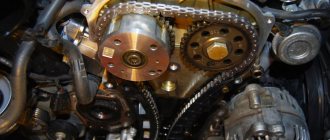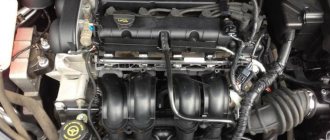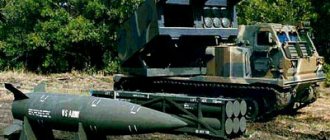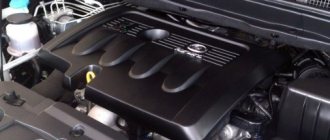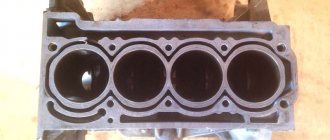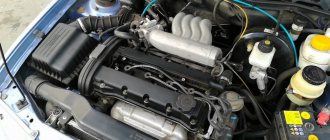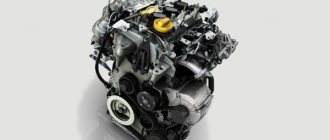In 2005, the VAG concern began equipping its cars with engines of the EA111 family. Until 2009, this family consisted of turbocharged 1.4-liter engines, a naturally aspirated 1.6 FSI, and then they were joined by a 1.2-liter turbo engine. But the problems of all these engines are common, except that the aspirated engine does not concern troubles with turbine malfunction.
The most common engine in the EA111 family is the 1.4-liter turbo engine. There are about 10 of its modifications, and power varies from 112 hp. (CAXA) up to 180 hp (CAVE, CTHE). All versions, whose power does not exceed 140 hp, are equipped with one turbocharger. 1.4-liter TSI/TFSI engines with 140-180 hp. equipped with both a turbocharger and a drive compressor. Let's look at typical and very expensive problems with a 1.4-liter engine using the example of its basic and very common CAXA version (122 hp).
Valve train chain
The timing drive of the 1.4 TSI CAXA engine is carried out by a chain. The chain turned out to be very short-lived. It must be changed at intervals of 80,000 km. Replacing the timing chain (with installation of a repair kit) will cost about 1000 rubles. If you need to replace the crankshaft sprocket and phase regulator, the price will double. Why do you have to change the chain? It simply stretches over time. The VW concern blamed the chain supplier for this - they say they did not make it well enough.
Stretching the timing chain can cause it to jump, which ultimately leads to the death of the engine: the valves hit the pistons. However, this trouble can be predicted. The fact is that if the chain is overstretched, the 1.4 TSI CAXA engine rattles and chirps immediately after starting. If a suspicious sound appears immediately after starting the engine, you should make an appointment to replace the chain.
However, the chain in the 1.4 TSI CAXA engine can jump without stretching it. The fact is that the chain tensioner in this engine is very poorly designed. The tensioner plunger performs its function - it extends the tensioner bar - only when there is operating oil pressure. When the engine is stopped, there is no oil pressure, and nothing prevents the tensioner plunger from loosening the stop. Moreover, the 1.4 TSI CAXA engine simply does not have a mechanism for blocking the counter-travel of the plunger. Therefore, every owner of a car with a 1.4-liter VAG engine knows that it is impossible to leave it in gear while parked. In this case, the chain will stretch, move the bar and plunger and will literally hang on the timing sprockets. When starting the engine, the chain will easily jump 1-2 teeth, which will be enough for the pistons to hit the valves. Sagging of the timing chain of the 1.4 TSI CAXA engine also occurs when trying to start the car while towing or while replacing the clutch. There have been cases that after installing a new clutch (both on a manual transmission and on a DSG), it was necessary to resort to replacing the motor, which “died” at the same service station immediately after turning on the starter. Due to negligence or ignorance of this feature of the 1.4 TSI CAXA engine, people encountered problems even after driving literally 10,000 km or a short time after replacing the timing chain repair kit. If a 1.4-liter engine fails due to timing chain stretching, then it is more profitable to buy a contract unit and replace it. The cost of the contract 1.4 TSI CAXA engine reaches 1,800 rubles. But during replacement, you should immediately inspect and evaluate the condition of the timing chain and, if necessary, update it too.
These problems with 1.4-liter engines of the EA111 family are known all over the world and are of the same nature.
Intolerance to low-quality gasoline
Of course, any engine prefers high-quality fuel, but this is a different story. Due to low-quality fuel, carbon deposits appear on the fuel injectors, which are located in the combustion chamber of the 1.4 TSI CAXA engine - the injection is direct. Carbon deposits on the injectors change the flow of fuel atomization, which can lead, in the worst case scenario, to burnout of the piston.
In general, the pistons of the 1.4 TSI CAXA engine, which Mahle produced for VW, are quite fragile. And the gasoline injection pressure is very high. And if low-quality fuel gets into the combustion chambers of this engine, then inevitable detonation will very quickly break the small, light and thin-walled pistons. Filling the 1.4 TSI CAXA engine with low-quality fuel quickly leads to burnout of the pistons and destruction of the cylinder walls. In addition, low-quality fuel causes injectors and even the fuel pump to fail.
Also, with low-quality gasoline, the intake valves of the 1.4 TSI CAXA engine become covered with carbon deposits. The point is direct injection, which is not able to clean the intake valves with fuel flow. On engines with distributed injection, passing as part of the fuel mixture along the valve stem and its working surfaces, most of the carbon deposits are washed away and burned in the chamber. But on 1.4 TSI CAXA engines with their direct injection, carbon deposits constantly accumulate on “cold” intake valves. A critical amount of carbon deposits accumulates after a mileage of 100,000 – 150,000 km. As a result, the valves no longer fit tightly to their seats, compression decreases, and the engine begins to run unevenly, loses power and consumes more fuel. Therefore, a fairly common procedure for 1.4 TSI engines is to remove the cylinder head, completely disassemble it and clean the passages and valves.
The operating principle of TSI engines and their main differences
TSI engines differ significantly from their predecessors (aspirated and turbocharged units) in the following indicators:
- presence of two compressors;
- improved cooling system;
- fuel injection changed;
- lightened engine block;
- increased power.
At low speeds, the turbocharger and mechanical supercharger work together. When the speed rises above 1700 rpm, the mechanical supercharger is activated only during moments of sharp acceleration, and further development occurs with the help of a turbocharger alone. The combined use of two devices ensures excellent pickup and rated torque in a wide speed range, smooth and stable operation of the unit.
Video - operating principle of the TSI engine from Volkswagen:
Unlike conventional “turbo” variants, the concept of “liquid cooling” appeared in TSI engines. The cooling system pipes pass through the intercooler, due to which the main air is forced into the cylinders. The pressure indicator becomes higher, resulting in a uniform filling of the combustion chamber with the combustible mixture and an increase in dynamics.
Fuel is supplied “directly” to the cylinders of TSI engines (bypassing the fuel rail), where it is mixed layer by layer with air. Combustion occurs with high efficiency. This injection system made it possible to increase power and reduce fuel consumption.
The new engine is lighter by almost 14 kg. This was achieved using a new block and head placement design. The camshafts and some other parts also weigh less than their predecessors.
The performance of the motors in this series is an order of magnitude higher. For example, the power of a 1.2 liter unit is 102 hp, while for a conventional turbocharged engine of identical volume this figure is only 90 hp.
If the 1.4 TSI CAXA does not “drive”
It happens that the 1.4-liter engine stops producing maximum power. This happens quite unexpectedly: the driver accelerates the car, squeezing the gas to the floor in all gears, and upon reaching maximum speed, the thrust suddenly disappears and does not return. Symptoms such as uneven traction during acceleration (jerky acceleration) or a drop in engine power when driving downhill are also possible. True, if you turn off the engine and start it again, the strength may return to the engine.
The reason for this behavior lies in the sticking of the wastegate bypass valve rod, which is installed in the exhaust manifold in front of the turbine. When the engine speed, and accordingly the exhaust gas pressure and turbine wheel speed, increase, the bypass valve opens, through which the gases flow past the turbine wheel. If this valve opens unevenly, sticks or does not close tightly, then problems arise with controlling the performance of the turbine (it simply does not create enough boost pressure), which leads to the symptoms described above.
In fact, the turbine itself has nothing to do with it, but the bypass valve and its rod need to be replaced. And they come assembled with the housing (both “snails”) of the turbine. A new building with a wastegate will cost 3,800 rubles. Turbines for the 1.4 TSI CAXA engine are rarely found at disassembly sites at a price of about 500 rubles.
Hot German guy
Due to the high operating temperature, camshaft supports, timing tensioners, and then the chain suffered, since its wear largely depends on the vibration frequency, the condition of the tensioner surface and the quality of the lubrication. As the temperature of the oil rises, it lubricates parts less well, drains faster, and the plastic becomes hard, as a result of which it dampens vibrations less well and wears out faster. The too high operating temperature of the engine still remains unchanged, but tuning products are able to correct this deficiency: they change both the temperature at which the thermostat operates and the temperature at which the fans turn on.
High operating temperatures also affect the operation of cooling system components. This series of engines has a very original design of the thermostat and pump: the pump is located in a single block with the thermostat and is driven by a belt from one of the balancer shafts. Moreover, the entire assembly, with the exception of the power bearing bracket, is made of plastic. The pump housing is not very strong, and over time it “leaks.” In addition, early versions of the assembly had a bad seal that swelled, causing cracks.
The service life of the pump-thermostat module turned out to be less than five years, and when the engine is operating in large cities and traffic jams - even less than three. And since the motor is very thermally loaded, any leak of coolant can lead to fatal consequences for both the piston group and the rest of the engine hardware. Now the price of the module is not very high, but five years ago the situation was much more acute, and the resource was lower.
Repair is also not easy: getting to the pump is very difficult, it is covered from above by the intake manifold, and access from below is also limited. But water easily gets onto the belt from below, which can lead to its failure, so you need to drive through puddles very carefully. The belt is not particularly afraid of oil, but there have been cases of its destruction for unknown reasons.
The oil pump and its drive can also cause a lot of trouble. The pump is located in the engine crankcase, and on the first two engine revisions it was simple, with a bypass valve. For the third generation EA888 (Gen3), a two-stage regulation system was developed. But, to be honest, even simple versions of the pump were not ideal. The oil receiver mesh sometimes became clogged, the chain sometimes broke in winter, and the pressure relief valve occasionally stuck with understandable consequences for the engine.
With the introduction of the regulation system, cases of rotation of the liners have become more frequent, which is also associated with the regulation system. However, new engines have their own characteristics. For example, the crankshaft journals are smaller in diameter, and the greater tendency to oil leaks due to overheating or impacts due to the lightweight crankcase design is not always due to poor operation of the oil pump.
Leaks also occur due to the fault of the turbine cooling tube. With runs of more than 50 thousand kilometers, vibrations of the latter often increase due to the deposition of carbon deposits and dirt on the impellers, especially when cold. Even with a fully operational turbine, leaks are quite possible: its design is not very good. Here we can only recommend checking the tube regularly or replacing it with a flexible tuning line.
"Zhor" oils
The 1.4 TSI CAXA engine consumes engine oil in much more modest quantities than its older brother 1.8 TSI or 2.0 TSI. However, this does not eliminate the need to monitor the oil level. It is recommended to remove the dipstick weekly and check the level.
It is also recommended to let the 1.4 TSI CAXA engine idle for about a minute before turning it off. During this time, the exhaust manifold and turbocharger parts will cool. After stopping the engine, the recirculation pump built into the engine cooling system will operate for some time. It can operate for some time after the ignition is turned off, driving coolant throughout the entire cooling system circuit. Therefore, do not be alarmed when, having turned off the engine, you get out of the car, and noise is still heard from under the hood
1.4-liter TSI engines are very popular. Many cars equipped with them were sold in Belarus, imported from Russia and Europe. Experts say that cars with 1.4 TSI engines are at risk due to the huge service intervals that exist in the West. It is not uncommon there that the engine oil is changed every 60,000 km. Cars with 1.4 TSI engines operated in Russia have their own characteristics: carbon deposits on the pistons and valves are not uncommon. Before buying a car with a 1.4 TSI CAXA engine, you need to conduct a thorough diagnosis.
You can select the engine for your car on our website
Malfunctions
Despite their high reliability, TSI engines are not free from faults that are typical for all engines of this type.
| FAULTS | CAUSES |
| Stretching the timing chain. | It may appear after 40 - 60 thousand km. mileage A characteristic symptom is rustling clicks in the area of the cylinder head. |
| An unheated TSI engine “troubles” and vibrates. | A characteristic defect of all TSI engines. When the engine is warm, the defect disappears. |
| The car refuses to move. | The turbine control valve or turbocharger bypass valve is faulty. |
- There is one more inconvenience that the TSI engine can cause - it takes a long time to warm up at idle in the cold season.
- In addition, while the vehicle is moving, the TSI power unit takes a long time to enter its operating thermal mode. You can get rid of this trouble if you install an autonomous preheater under the hood.
